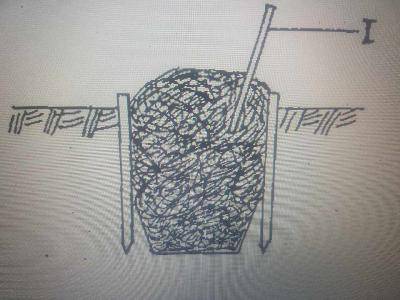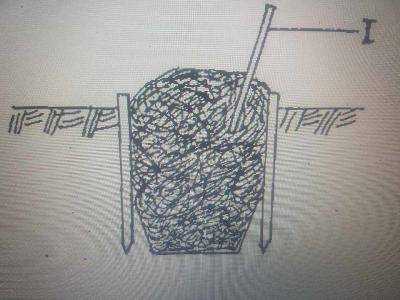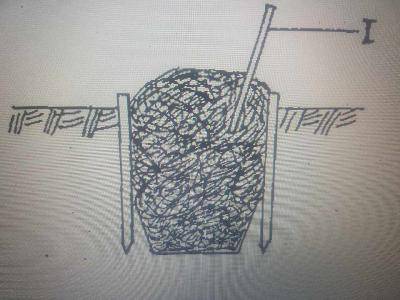
Agricultural Science Questions and Answers
A comprehensive list of Agricultural science questions with answers to help you prepare for JAMB, WAEC, NECO, Post UTME exams.

A comprehensive list of Agricultural science questions with answers to help you prepare for JAMB, WAEC, NECO, Post UTME exams.
10:10:10
20:10:10
10:10:20
20:20:10
Correct answer is B
For the cultivation of yam and cassava, the recommended NPK fertilizer ratio is 20:10:10. This means the fertilizer contains a higher percentage of nitrogen (N) compared to phosphorus (P) and potassium (K). Nitrogen is essential for promoting vegetative growth and leaf development, which is important for yam and cassava during their early stages of growth.
Assuming a sow was serviced on May 1 and conceived the same day, the expected date of parturition is
June 2
September 30
August 24
October 2
Correct answer is B
The gestation period for a sow (female pig) is approximately 3 months, 3 weeks, and 3 days, which is equivalent to about 114 days.
If the sow was serviced (mated) on May 1, we can calculate the expected date of parturition (giving birth) as follows:
Count 3 months from May 1: May + 3 months = August 1
Count 3 weeks from August 1: August 1 + 3 weeks = August 22
Count 3 more days from August 22: August 22 + 3 days = August 25
So, based on the gestation period, the expected date of parturition is around August 25. However, since not all months have the same number of days, we need to adjust for the extra days to reach the actual parturition date.
Counting from August 25 to September 30, there are 36 days (25 days in August and 5 days in September). Adding these 36 days to August 25:
August 25 + 36 days = September 30
Therefore, the expected date of parturition is September 30.
In a poultry farm, 2,000 birds were laying an average of 1,680 eggs per day. Use this information to answer the question
If an egg tray contains 30 eggs, how many trays of eggs will be collected in one week?
240
526
286
392
Correct answer is D
Total number of birds = 2,000
Number of eggs laid per day = 1,680
Number of eggs laid in 7days = 1,680 x 7 =11760
Number of eggs in one tray = 30
x =11760/30
=392 trays
In a poultry farm, 2,000 birds were laying an average of 1,680 eggs per day. Use this information to answer the question
What is the percentage of birds that did not lay eggs?
16%
84%
19%
46%
Correct answer is A
Number of birds that did not lay eggs = Total number of birds - Number of eggs laid
Given information:
Total number of birds = 2,000
Number of eggs laid = 1,680 per day
Number of birds that did not lay eggs = 2,000 - 1,680 = 320
Now, we can calculate the percentage of birds that did not lay eggs:
Percentage of birds that did not lay eggs = (Number of birds that did not lay eggs / Total number of birds) x 100
Percentage of birds that did not lay eggs = (320 / 2,000) x 100 = 0.16 x 100 = 16%
Therefore, the percentage of birds that did not lay eggs on that particular day is 16%.
Which of the following crops require a nursery?
Rubber
Cotton seed
Yam
Soya bean
Correct answer is A
Among the given options, 'Rubber' is the crop that requires a nursery. A nursery is a place where plants are propagated and grown to a desired age. Rubber seeds are usually sown in a nursery and the seedlings are transplanted to the field when they are about 6 months old.
Soil structure is described as the
Proportion of different sizes of soil particles
Degree of water percolation within the soil
Degree of soil aeration within the soil
Arrangement of soil particles into aggregates
Correct answer is D
Soil structure refers to the way soil particles are organized and arranged into aggregates or clumps. It is an important characteristic of soil that influences various soil properties and processes, including water retention, aeration, root penetration, and nutrient availability.
The diagram above illustrates a method of compost making. Study it and answer the question.

A material that could be used as starter in the method of compost making illustrated is
Ash
Straw
Blood
Urine
Correct answer is D
Urine can be used as a starter or compost activator in the method of compost making. Human urine is rich in nitrogen, which is an essential element for the composting process. Nitrogen is a key component that helps promote the growth and activity of beneficial microorganisms responsible for breaking down organic matter in the compost pile.
The diagram above illustrates a method of compost making. Study it and answer the question.

The part labelled I is used for
Checking the decomposition rate
Hastening the fermentation rate
Turning the compost materials
Stacking the compost materials
Correct answer is C
The part labelled I is used for turning the compost materials.
The diagram above illustrates a method of compost making. Study it and answer the question.

The method of compost milking illustrated in the diagram is
Heap
Bin
Sheet
Pit
Correct answer is D
The method of compost milking illustrated in the diagram is pit
Ornamental plants are primarily cultivated to
Provide fodder for livestock
Beautify the environment
Serve as mulching materials
Serve as raw materials
Correct answer is B
Ornamental plants are primarily cultivated for their aesthetic value and decorative purposes. They are grown and maintained to beautify the environment, whether in gardens, parks, landscapes, or indoor settings.
Nigerian Army Recruitment 2024 for Trades / Non Tradesmen & Women (87RRI)
Nigerian Agip Exploration (NAE) Limited Post Graduate Scholarship Award Scheme 2024 / 2025
Graduate Trainees at Goonite (NG) Hygiene Products FZE
Production Supervisor at Buckler Land Systems Limited
Training Manager at Buckler Systems
IT Officer / Web Developer at Fadel Minerals Nigeria Limited
Accounts Assistant at Fadel Minerals Nigeria Limited
Associate - Tax Regulatory & Insurance at Pan African Towers Limited
Human Resources Assistant at Fadel Minerals Nigeria Limited